What'sNEW Jan - Mar 2018
 ...some models suggest Venus once had a habitable climate with liquid water on its surface for as long as 2 billion years.
...some models suggest Venus once had a habitable climate with liquid water on its surface for as long as 2 billion years.
 Is there life adrift in the clouds of Venus? by Terry Devitt, University of Wisconsin-Madison (+PhysOrg.com), 30 Mar 2018. Is there life adrift in the clouds of Venus? by Terry Devitt, University of Wisconsin-Madison (+PhysOrg.com), 30 Mar 2018.
 Venus' Spectral Signatures and the Potential for Life in the Clouds by Sanjay S. Limaye et al., Astrobiology, online 30 Mar 2018. Venus' Spectral Signatures and the Potential for Life in the Clouds by Sanjay S. Limaye et al., Astrobiology, online 30 Mar 2018.
 On the possibility of microbiota transfer from Venus to Earth by N.C. Wickramasinghe and J.T. Wickramasinghe, Astrophys Space Sci, online 22 Jul 2008. On the possibility of microbiota transfer from Venus to Earth by N.C. Wickramasinghe and J.T. Wickramasinghe, Astrophys Space Sci, online 22 Jul 2008.
— Pictured: a "Venus Atmospheric Maneuverable Platform," proposed to sample Venus' cloud layer for up to a year.
Space dust from the outside surface of the International Space Station contains bacterial DNA, according to a report from Russia. Space-suited cosmonauts collected ten dust samples from various locations on the ISS from 2013 to 2016. All were positive for DNA similar to that of terrestrial bacteria. Reports of bacteria or fungi on the ISS have come from Russia before, but this claim is more fully documented. The ISS orbits at an altitude of 400 kilometers, so microbes from space are at least a plausible way to explain the reports.
 The DNA of bacteria of the World Ocean and the Earth in cosmic dust at the International Space Station by T. V. Grebennikova et al., The Scientific World Journal, accepted 08 Mar 2018. The DNA of bacteria of the World Ocean and the Earth in cosmic dust at the International Space Station by T. V. Grebennikova et al., The Scientific World Journal, accepted 08 Mar 2018.
 02 Dec 2017 and 02 Dec 2017 and
 29 May 2017: earlier reports from Russia. 29 May 2017: earlier reports from Russia.
 ...Analysis of Interstellar Dust has historical information. ...Analysis of Interstellar Dust has historical information.
 Thanks, Chandra Wickramasinghe. Thanks, Chandra Wickramasinghe.
 Cause of Cambrian Explosion - Terrestrial or Cosmic? by Ted Steele, Chandra Wickramasinghe et al., doi:10.1016/j.pbiomolbio.2018.03.004, Progress in Biophysics and Molecular Biology, online 13 Mar 2018:
Here, 33 specialists (including me) in astrobiology and related fields cite several lines of evidence to advocate panspermia. With conviction that irritated most reviewers, we promote a major paradigm shift and its spectrum of implications. Cause of Cambrian Explosion - Terrestrial or Cosmic? by Ted Steele, Chandra Wickramasinghe et al., doi:10.1016/j.pbiomolbio.2018.03.004, Progress in Biophysics and Molecular Biology, online 13 Mar 2018:
Here, 33 specialists (including me) in astrobiology and related fields cite several lines of evidence to advocate panspermia. With conviction that irritated most reviewers, we promote a major paradigm shift and its spectrum of implications.
 Open Access: PDF | alternate | local pdf. Open Access: PDF | alternate | local pdf.
 Thanks, coauthor Gensuke Tokoro, for sponsoring Open Access! Thanks, coauthor Gensuke Tokoro, for sponsoring Open Access!
 Life as a Cosmic Phenomenon... (.doc), historical perspective by Chandra Wickramasinghe, 20 Mar 2018. Life as a Cosmic Phenomenon... (.doc), historical perspective by Chandra Wickramasinghe, 20 Mar 2018.
 ...the return of panspermia, informed commentary by Stephen Fleischfresser, Cosmos, 26 Apr 2018. ...the return of panspermia, informed commentary by Stephen Fleischfresser, Cosmos, 26 Apr 2018.
 Professor John Lattanzio asks, "indisputable?" Ted Steele and other coauthors reply, 20-21 May 2018. Professor John Lattanzio asks, "indisputable?" Ted Steele and other coauthors reply, 20-21 May 2018.
 Mature Extraterrestrial Biology in Astrophysical Phenomena: Steele et al. replyto R Duggleby, online 09 Nov 2018. Mature Extraterrestrial Biology in Astrophysical Phenomena: Steele et al. replyto R Duggleby, online 09 Nov 2018.
 follow-on comments by John Elder, NewDaily, Australia, 12 Jan 2019. follow-on comments by John Elder, NewDaily, Australia, 12 Jan 2019.
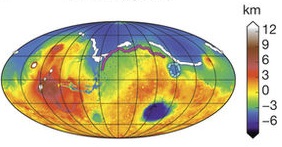 Mars' ocean formed before or during the rise of the Tharsis volcanic plateau. Then the poles wandered. According to a rigorous new analysis, this is the best way to explain the ancient shorelines, which do not follow the contours of the land today.
Mars' ocean formed before or during the rise of the Tharsis volcanic plateau. Then the poles wandered. According to a rigorous new analysis, this is the best way to explain the ancient shorelines, which do not follow the contours of the land today.
 Timing of oceans on Mars from shoreline deformation by Robert I. Citron, Michael Manga & Douglas J. Hemingway, Nature, 19 Mar 2018. Timing of oceans on Mars from shoreline deformation by Robert I. Citron, Michael Manga & Douglas J. Hemingway, Nature, 19 Mar 2018.
 Oceans on Mars formed early by Maria T. Zuber, Nature, 28 Mar 2018. Oceans on Mars formed early by Maria T. Zuber, Nature, 28 Mar 2018.
 Ancient Oceans on Mars Maybe Older and Shallower Than Thought (with 4.5 min.video), by Charles Q. Choi, Space.com, 19 Mar 2018. Ancient Oceans on Mars Maybe Older and Shallower Than Thought (with 4.5 min.video), by Charles Q. Choi, Space.com, 19 Mar 2018.
 Thanks, Stan Franklin. Thanks, Stan Franklin.
 Life on Mars! has more about water there. Life on Mars! has more about water there.
Fossilized evidence for life possibly 4,280 million years old disputed:
 Manganese Oxides Resembling Microbial Fabrics... by A.D. Muscente et al., Astrobiology, online 12 Mar 2018. Manganese Oxides Resembling Microbial Fabrics... by A.D. Muscente et al., Astrobiology, online 12 Mar 2018.
 02 Mar 2017: our initial report of this evidence. 02 Mar 2017: our initial report of this evidence.
If Earth's history is any guide, life in our galaxy will be mostly unicellular bacteria, living in a reducing atmosphere.
 Red Dwarfs: Their Impact on Biosignatures, and Detecting Early Life on Exoplanets, by Alex Tolley, intro by Paul Gilster, Centauri Dreams, posted 16 Mar, and 23 Feb, 2018. Red Dwarfs: Their Impact on Biosignatures, and Detecting Early Life on Exoplanets, by Alex Tolley, intro by Paul Gilster, Centauri Dreams, posted 16 Mar, and 23 Feb, 2018.
 Spectra of Earth-like Planets Through Geological Evolution Around FGKM Stars by Sarah Rugheimer and Lisa Kaltenegger, arXiv.org > astro-ph > arXiv:1712.10027, 28 Dec 2017. Spectra of Earth-like Planets Through Geological Evolution Around FGKM Stars by Sarah Rugheimer and Lisa Kaltenegger, arXiv.org > astro-ph > arXiv:1712.10027, 28 Dec 2017.
 Bacteria... has more about extremophiles. Bacteria... has more about extremophiles.
 Gaia has more about the evolution of biospheres, especially ours. Gaia has more about the evolution of biospheres, especially ours.
 Life on Europa, Other Moons, Other Planets?... has links to clues about life elsewhere. Life on Europa, Other Moons, Other Planets?... has links to clues about life elsewhere.
Brines of various salts have recently flowed on asteroid Ceres, according to an international team of scientists analysing precise spectroscopic data from NASA's Dawn spacecraft. Hydrated carbonates on the surface must have been recently deposited, and dehydration is ongoing. The salts vary in location and concentration, as from episodic flows. And evidence for another kind of water movement comes from the seasonal variation of ice on the walls of craters like Juling (pictured). Active water and previously detected organics make us wonder, could microbial life exist there?
 Nature, formation, and distribution of carbonates on Ceres by F.G. Carrozzo et al., Science Advances, 02 Mar 2018. Nature, formation, and distribution of carbonates on Ceres by F.G. Carrozzo et al., Science Advances, 02 Mar 2018.
 Dwarf planet Ceres has a water cycle but it's not like Earth's by Leah Crane, New Scientist, 14 Mar 2018. Dwarf planet Ceres has a water cycle but it's not like Earth's by Leah Crane, New Scientist, 14 Mar 2018.
 Thanks, Stan Franklin. Thanks, Stan Franklin.
 17 Feb 2017: more about Ceres. 17 Feb 2017: more about Ceres.
 Life on Europa... has related links. Life on Europa... has related links.
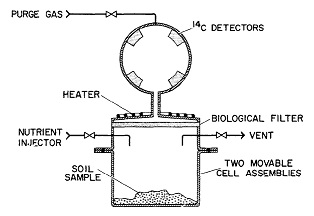 ...proposals ...were always rejected with the flat statement that no life detection tests would be funded
— remembering, 50 years later, the backstory of the LR experiment on NASA's Viking mission to Mars, and frustration afterward:
...proposals ...were always rejected with the flat statement that no life detection tests would be funded
— remembering, 50 years later, the backstory of the LR experiment on NASA's Viking mission to Mars, and frustration afterward:
 Celebrating Viking: Gilbert Levin Recalls the Search for Life on Mars by David Warmflash, Discover, 20 Jul 2016. Celebrating Viking: Gilbert Levin Recalls the Search for Life on Mars by David Warmflash, Discover, 20 Jul 2016.
 Life on Mars! has more. Life on Mars! has more.
 Thanks, George Nickas, for the link to this important interview. Thanks, George Nickas, for the link to this important interview.
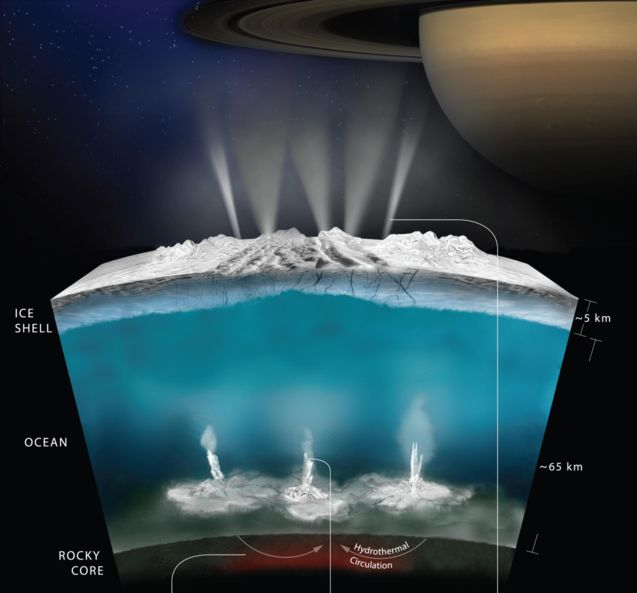 Enceladus' internal ocean is made primarily of water, but the spacecraft's instruments also detected methane, carbon dioxide, ammonia, molecular nitrogen and molecular hydrogen, among other compounds.
Enceladus' internal ocean is made primarily of water, but the spacecraft's instruments also detected methane, carbon dioxide, ammonia, molecular nitrogen and molecular hydrogen, among other compounds.
 Study finds a life form on Earth that may do fine on icy Enceladus, by Deborah Netburn, latimes.com, 27 Feb 2018; and: Study finds a life form on Earth that may do fine on icy Enceladus, by Deborah Netburn, latimes.com, 27 Feb 2018; and:
...at least one kind of microbe could survive in conditions like those within the moon.
 ...Life on Enceladus by Paul Gilster, Centauri Dreams, 02 Mar 2018; re: ...Life on Enceladus by Paul Gilster, Centauri Dreams, 02 Mar 2018; re:
 Biological methane production under putative Enceladus-like conditions by Ruth-Sophie Taubner et al., Nature Communications, online 27 Feb 2018. Biological methane production under putative Enceladus-like conditions by Ruth-Sophie Taubner et al., Nature Communications, online 27 Feb 2018.
 Life on Europa... has related links. Life on Europa... has related links.
 Bacteria... has lots about their capabilities. Bacteria... has lots about their capabilities.
 Interstellar Chemistry endorses methane as a sign of life. Interstellar Chemistry endorses methane as a sign of life.
 Thanks for links, Robert Sweeney, Stan Franklin and Google Alerts. Thanks for links, Robert Sweeney, Stan Franklin and Google Alerts.
 Microbes found in... hostile places, giving hope for life on Mars by Elizabeth Pennisi, Science, online 26 Feb 2018. Microbes found in... hostile places, giving hope for life on Mars by Elizabeth Pennisi, Science, online 26 Feb 2018.
 Microbes from Space... by Chandra Wickramasinghe, received 01 Mar 2018. Microbes from Space... by Chandra Wickramasinghe, received 01 Mar 2018.
 Life on Mars! has more. Life on Mars! has more.
Could some previously reported Archean microfossils be vesicular volcanic glass? This question is asked in an article reminding everyone not to be fooled by pseudo-fossils:
 Volcanogenic Pseudo-Fossils from the ~3.48 Ga Dresser Formation, Pilbara, Western Australia by David Wacey et al., Astrobiology, online 20 Feb 2018.
The danger is real, we know. NASA's Shawn Domagal-Goldman says the standard criterion for recognizing life has been: Life must be the only plausible explanation. We believe this criterion is met, for example, by the fossil that the Opportunity rover photographed on Mars in 2004, mentioned: Volcanogenic Pseudo-Fossils from the ~3.48 Ga Dresser Formation, Pilbara, Western Australia by David Wacey et al., Astrobiology, online 20 Feb 2018.
The danger is real, we know. NASA's Shawn Domagal-Goldman says the standard criterion for recognizing life has been: Life must be the only plausible explanation. We believe this criterion is met, for example, by the fossil that the Opportunity rover photographed on Mars in 2004, mentioned:
 28 Oct 2015 and 28 Oct 2015 and  26 July 2013. 26 July 2013.
Molecular clock analyses always come up with older dates than fossils.... Plant evolutionary biologist Jim Leebens-Mack of the University of Georgia makes this comment following a study focussed on the genes of the earliest plants on Earth. The genes look significantly older than the plants. Darwinists respond that the fossil record is incomplete. We think genes always come first.
 The timescale of early land plant evolution by Jennifer L. Morris et al., PNAS, online 20 Feb 2018. The timescale of early land plant evolution by Jennifer L. Morris et al., PNAS, online 20 Feb 2018.
 Land plants arose earlier than thought... by Elizabeth Pennisi, Science News, 19 Feb 2018. Land plants arose earlier than thought... by Elizabeth Pennisi, Science News, 19 Feb 2018.
 Metazoan Genes Older Than Metazoa? has lots more about genes that seem older than they should be. Metazoan Genes Older Than Metazoa? has lots more about genes that seem older than they should be.
 Genes Older Than Earth? has evidence for a radical suggestion. Genes Older Than Earth? has evidence for a radical suggestion.
| 11 Feb 2018 |
What'sNEW about HGT  | | |
A giant virus has genes for eukaryotic histones.
 Phylogenetic analysis of the core histone doublet and DNA topo II genes of Marseilleviridae: Evidence of proto-eukaryotic provenance by Albert J. Erives, Epigenetics & Chromatin, 28 Nov 2017. Phylogenetic analysis of the core histone doublet and DNA topo II genes of Marseilleviridae: Evidence of proto-eukaryotic provenance by Albert J. Erives, Epigenetics & Chromatin, 28 Nov 2017.
 Giant viruses may play an intriguing role in evolution of life on Earth by Richard C. Lewis, The University of Iowa
(+ScienceDaily), 01 Feb 2018. Giant viruses may play an intriguing role in evolution of life on Earth by Richard C. Lewis, The University of Iowa
(+ScienceDaily), 01 Feb 2018.
 Thanks, Martin Langford and Stan Franklin. Thanks, Martin Langford and Stan Franklin.
 Giant Viruses May Have Played Important Role in Evolution of Life, Sci-News, 14 Feb 2018. Giant Viruses May Have Played Important Role in Evolution of Life, Sci-News, 14 Feb 2018.
 Viruses... points to more examples of viruses carrying genes they apparently don't need, but eukaryotes do. Viruses... points to more examples of viruses carrying genes they apparently don't need, but eukaryotes do.
Habitable planets could have been seeded by means of panspermia through two different channels: (i) direct impact of interstellar objects, and (ii) temporary capture of the interstellar object followed by interplanetary panspermia.
 Implications of Captured Interstellar Objects for Panspermia and Extraterrestrial Life by Manasvi Lingam and Abraham Loeb, arXiv.org>astro-ph>arXiv:1801.10254, accepted 01 Feb (+pdf draft, 16 Oct) 2018. Implications of Captured Interstellar Objects for Panspermia and Extraterrestrial Life by Manasvi Lingam and Abraham Loeb, arXiv.org>astro-ph>arXiv:1801.10254, accepted 01 Feb (+pdf draft, 16 Oct) 2018.
 Interstellar Asteroids Like 'Oumuamua Could Rewrite the Origins of Life on Earth, Gizmodo, 08 Feb 2018. Interstellar Asteroids Like 'Oumuamua Could Rewrite the Origins of Life on Earth, Gizmodo, 08 Feb 2018.
 01 Nov 2017 and 01 Nov 2017 and  22 Dec 2017: our first reports about this asteroid. 22 Dec 2017: our first reports about this asteroid.
 Thanks, Google Alerts & Tom Mazanec. Thanks, Google Alerts & Tom Mazanec.
 An ancient virus could be responsible for human consciousness: 4-min. facebook video, posted 08 Feb 2018, re: An ancient virus could be responsible for human consciousness: 4-min. facebook video, posted 08 Feb 2018, re:
Arc protein derived from a virus. More below:

 13 Jan 2018. 13 Jan 2018.
 Thanks, Paul Ringger, Jr. & Greg Irwin. Thanks, Paul Ringger, Jr. & Greg Irwin.
| 07 Feb 2018 |
What'sNEW about HGT  | | |
More than 800 million viruses per square meter per day descend from the high atmosphere to the ground.
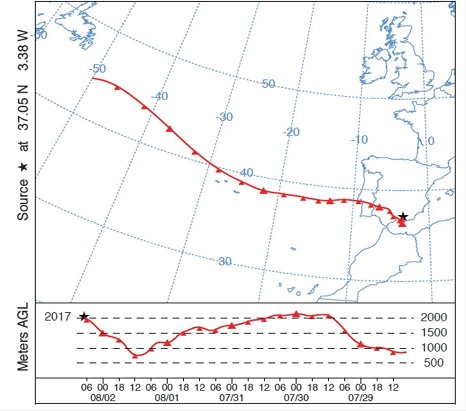 This news comes from an international team who sampled the air weekly or bi-weekly from two mountain sites in southern Spain. They found that bacteria and viruses above the atmospheric boundary layer are more abundant, can persist longer and can travel farther than previously known. They observe that the particles come from the ocean or from deserts, with transport variously affected by weather. And they remark, Rather than being a negative consequence, this deposition provides a seed bank that should allow ecosystems to rapidly adapt to environmental changes. The same atmospheric dispersal of viruses and bacteria could also facilitate panspermia from beyond Earth, we notice.
This news comes from an international team who sampled the air weekly or bi-weekly from two mountain sites in southern Spain. They found that bacteria and viruses above the atmospheric boundary layer are more abundant, can persist longer and can travel farther than previously known. They observe that the particles come from the ocean or from deserts, with transport variously affected by weather. And they remark, Rather than being a negative consequence, this deposition provides a seed bank that should allow ecosystems to rapidly adapt to environmental changes. The same atmospheric dispersal of viruses and bacteria could also facilitate panspermia from beyond Earth, we notice.
 Deposition rates of viruses and bacteria above the atmospheric boundary layer by Isabel Reche et al., doi:10.1038/s41396-017-0042-4, ISME Journal, 29 Jan 2018. Deposition rates of viruses and bacteria above the atmospheric boundary layer by Isabel Reche et al., doi:10.1038/s41396-017-0042-4, ISME Journal, 29 Jan 2018.
 Viruses - lots of them - are falling from the sky, University of British Columbia (+ScienceDaily), 06 Feb 2018. Viruses - lots of them - are falling from the sky, University of British Columbia (+ScienceDaily), 06 Feb 2018.
 Billions of Viruses Are Falling to Earth... by Mindy Weisberger, LiveScience, 07 Feb 2018.
Viruses modulate the function and evolution of of all living things.... Billions of Viruses Are Falling to Earth... by Mindy Weisberger, LiveScience, 07 Feb 2018.
Viruses modulate the function and evolution of of all living things....
 ... Most viruses and bacteria fall from the sky, University of Granada (+Astrobiology Web), 01 Mar 2018. ... Most viruses and bacteria fall from the sky, University of Granada (+Astrobiology Web), 01 Mar 2018.
 Trillions Upon Trillions of Viruses Fall From the Sky Each Day by Jim Robbins, The New York Times, 13 Apr 2018. Trillions Upon Trillions of Viruses Fall From the Sky Each Day by Jim Robbins, The New York Times, 13 Apr 2018.
 Thanks for links, Bill Smith, Chandra Wickramasinghe, Ted Steele, Ronnie McGhee, John Hughes and Rob Schick. Thanks for links, Bill Smith, Chandra Wickramasinghe, Ted Steele, Ronnie McGhee, John Hughes and Rob Schick.
 Thanks for the full paper [local pdf], coauthor Curtis Suttle. Thanks for the full paper [local pdf], coauthor Curtis Suttle.
 Viruses... has lots more. Viruses... has lots more.
 Stellar Embryos in Nearby Dwarf Galaxy Contain Surprisingly Complex Organic Molecules, The National Radio Astronomy Observatory (+Newswise), 30 Jan 2018. Stellar Embryos in Nearby Dwarf Galaxy Contain Surprisingly Complex Organic Molecules, The National Radio Astronomy Observatory (+Newswise), 30 Jan 2018.
 Hoyle and Wickramasinghe's Analysis of Interstellar Dust is relevant. Hoyle and Wickramasinghe's Analysis of Interstellar Dust is relevant.
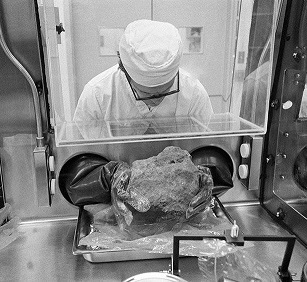 One should carry models lightly and be prepared to drop them if something better comes along, because it happens all the time — Planetary scientist William Bottke, Southwest Research Institute
One should carry models lightly and be prepared to drop them if something better comes along, because it happens all the time — Planetary scientist William Bottke, Southwest Research Institute
 Bashing holes in the tale of Earth's troubled youth: New analyses undermine a popular theory about an intense asteroid storm 4 billion years ago, by Adam Mann, Nature, 24 Jan 2018. Bashing holes in the tale of Earth's troubled youth: New analyses undermine a popular theory about an intense asteroid storm 4 billion years ago, by Adam Mann, Nature, 24 Jan 2018.
 December 2, 2000: our comments on the "late heavy bombardment". December 2, 2000: our comments on the "late heavy bombardment".
 Lisa Pratt, ...has been named the planetary protection officer at NASA. The position is responsible for the protection of Earth from potential contamination by extraterrestrial life forms.... This position would have been judged entirely unnecessary 20 years ago.
Lisa Pratt, ...has been named the planetary protection officer at NASA. The position is responsible for the protection of Earth from potential contamination by extraterrestrial life forms.... This position would have been judged entirely unnecessary 20 years ago.
 Astrobiologist Named NASA Planetary Protection Officer, Indiana University (+Newswise), 18 Jan 2018. Astrobiologist Named NASA Planetary Protection Officer, Indiana University (+Newswise), 18 Jan 2018.
 Introduction: More Than Panspermia has some relevant history. Introduction: More Than Panspermia has some relevant history.
| 20 Jan 2018 |
What'sNEW about HGT  | | |
The genomes of all vertebrates harbor remnants of ancient retroviral infections, having affected the germ line cells during the last 100 million years. These sequences, named Endogenous Retroviruses (ERVs), have been transmitted to the offspring in a Mendelian way, being relatively stable components of the host genome even long after their exogenous counterparts went extinct. ...ERVs significantly contributed to the host genome shaping by introducing genetic variation and novel functions.
 HERV-W group evolutionary history in non-human primates: characterization of ERV-W orthologs in Catarrhini and related ERV groups in Platyrrhini by Nicole Grandi et al., doi:10.1186/s12862-018-1125-1, BMC Evolutionary Biology, online 19 Jan 2018. HERV-W group evolutionary history in non-human primates: characterization of ERV-W orthologs in Catarrhini and related ERV groups in Platyrrhini by Nicole Grandi et al., doi:10.1186/s12862-018-1125-1, BMC Evolutionary Biology, online 19 Jan 2018.
 Viruses... is the main related local webpage. Viruses... is the main related local webpage.
| 17 Jan 2018 |
What'sNEW about HGT  | | |
Viruses Drive Evolution
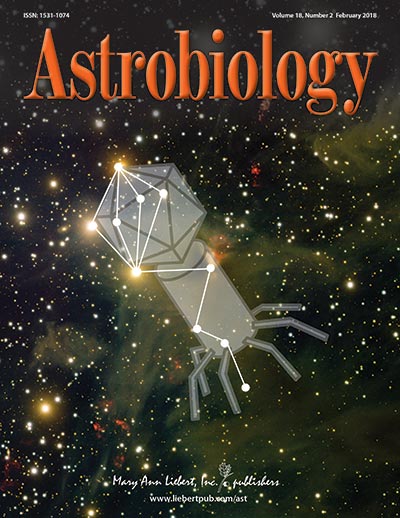
This matter-of-fact heading comes in a well-referenced review article by three expert virologists. They confirm this once-radical notion with accumulated knowledge that needs to be more widely recognized. For example, ...the successful transfer of novel viral genes into host genomes is likely commonplace. ...the human genome contains between 8% and 40% virus derived sequences, some of which have been beneficial for human development. (Recognized protein-coding genes occupy less than 2% of the human genome.)
They also remind us that viral genes are mostly unknown. Many viral genomes contain genes that have no homologs except in closely related viruses. ...A recent analysis of all published viral DNA metagenomes found that nearly 70% of virus-associated genes were novel. We think viral genes might enable future life here to evolve in ways we cannot foresee.
 Astrovirology: Viruses at Large in the Universe by Aaron J. Berliner, Tomohiro Mochizuki, and Kenneth M. Stedman, doi:10.1089/ast.2017.1649, Astrobiology, Feb (online 10 Jan) 2018. Astrovirology: Viruses at Large in the Universe by Aaron J. Berliner, Tomohiro Mochizuki, and Kenneth M. Stedman, doi:10.1089/ast.2017.1649, Astrobiology, Feb (online 10 Jan) 2018.
 Commentary by Alex Barasch, Slate, 17 Jan 2018. Commentary by Alex Barasch, Slate, 17 Jan 2018.
 Commentary by Sarah Wild, posted on Space.com, 26 May 2018. Commentary by Sarah Wild, posted on Space.com, 26 May 2018.
 Thanks for a link, Ronnie McGhee. Thanks for a link, Ronnie McGhee.
 Viruses... is the main related local webpage. Viruses... is the main related local webpage.
 07 Apr 2023: Astrovirology review and update. 07 Apr 2023: Astrovirology review and update.
| 13 Jan 2018 |
What'sNEW about HGT  | | |
The genomes of plants and animals are littered with the remains of viruses that integrated themselves into their DNA hundreds of millions of years ago. Most of these viral remnants are inactive, but the latest research suggests that some evolved into genes that let cells communicate. (pictured: SEM of an Arc protein)
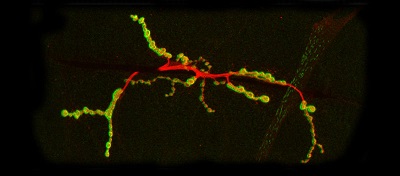
 Cells hack virus-like protein to communicate, Nature News, 11 Jan 2018; re: Cells hack virus-like protein to communicate, Nature News, 11 Jan 2018; re:
 The Neuronal Gene Arc Encodes a Repurposed Retrotransposon Gag Protein that Mediates Intercellular RNA Transfer by Elissa D. Pastuzyn et al., doi:10.1016/j.cell.2017.12.024; and: The Neuronal Gene Arc Encodes a Repurposed Retrotransposon Gag Protein that Mediates Intercellular RNA Transfer by Elissa D. Pastuzyn et al., doi:10.1016/j.cell.2017.12.024; and:
 Retrovirus-like Gag Protein Arc1 Binds RNA and Traffics across Synaptic Boutons by James Ashley, Benjamin Cordy et al., doi:10.1016/j.cell.2017.12.022, Cell, 11 Jan 2017. Retrovirus-like Gag Protein Arc1 Binds RNA and Traffics across Synaptic Boutons by James Ashley, Benjamin Cordy et al., doi:10.1016/j.cell.2017.12.022, Cell, 11 Jan 2017.
 An Ancient Virus May Be Responsible for Human Consciousness by Rafi Letzter, Live Science, 02 Feb 2018. An Ancient Virus May Be Responsible for Human Consciousness by Rafi Letzter, Live Science, 02 Feb 2018.
 Thanks for links, Peggy Sparks Lake and Google Alerts. Thanks for links, Peggy Sparks Lake and Google Alerts.
 08 Feb 2018: a related facebook video. 08 Feb 2018: a related facebook video.
 Viruses and Other Gene Transfer Mechanisms has many more examples of viruses advancing eukaryotic evolution. Viruses and Other Gene Transfer Mechanisms has many more examples of viruses advancing eukaryotic evolution.
You'd expect life to be seasonal, says NASA's Mike Mumma, commenting on the annual cycle of methane abundance in the northern atmosphere of Mars.
 Mars methane rises and falls with the seasons by Eric Hand, Science, 05 Jan 2018. Mars methane rises and falls with the seasons by Eric Hand, Science, 05 Jan 2018.
 Life on Mars! has more. Life on Mars! has more.
...the results support the idea that the organic matter originated from ...an ocean world in the early solar system, possibly Ceres.
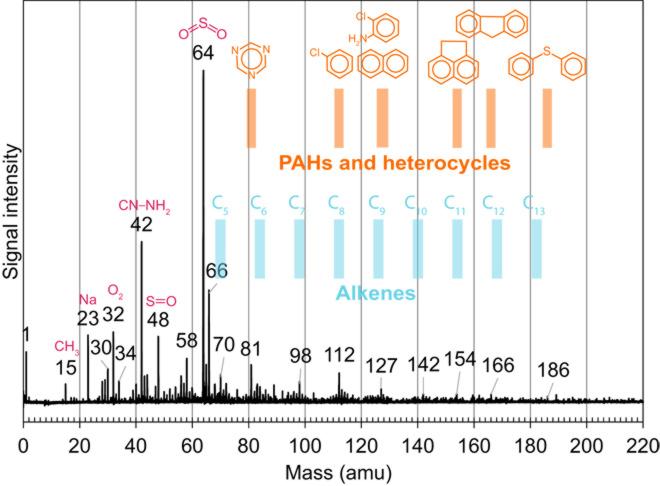 An interdisciplinary collaboration of Japanese and American scientists make this observation following their study of 4.5 billion-year-old, millimeter-sized blue salt crystals from two meteorites. Using state-of-the-art instruments, the analysts propose mechanisms to account for the amino acids and other organics (see right), and the varied isotope ratios observed. Lead author Queenie Chan says, Everything leads to the conclusion that the origin of life is really possible elsewhere.
An interdisciplinary collaboration of Japanese and American scientists make this observation following their study of 4.5 billion-year-old, millimeter-sized blue salt crystals from two meteorites. Using state-of-the-art instruments, the analysts propose mechanisms to account for the amino acids and other organics (see right), and the varied isotope ratios observed. Lead author Queenie Chan says, Everything leads to the conclusion that the origin of life is really possible elsewhere.
Their suppositions and conclusion follow the standard assumption that all evidence from space is pre-biotic. But evidence like amino acids in meteorites might also be explained with actual biology, as they almost admit.
 Organic matter in extraterrestrial water-bearing salt crystals, doi:10.1126/sciadv.aao3521, by Queenie H. S. Chan et al., Science Advances, 10 Jan 2018. Organic matter in extraterrestrial water-bearing salt crystals, doi:10.1126/sciadv.aao3521, by Queenie H. S. Chan et al., Science Advances, 10 Jan 2018.
 Ingredients for Life Revealed in Meteorites That Fell to Earth, by Glenn Roberts Jr., Lawrence Berkeley National Laboratory (+Newswise), updated 11 Jan 2018. Ingredients for Life Revealed in Meteorites That Fell to Earth, by Glenn Roberts Jr., Lawrence Berkeley National Laboratory (+Newswise), updated 11 Jan 2018.
 Thanks, Tom Fulton and Stan Franklin. Thanks, Tom Fulton and Stan Franklin.
 Comets and Comets and  ...Interstellar Dust are related webpages. ...Interstellar Dust are related webpages.
 17 Feb 2017 & 17 Feb 2017 &  15 Mar 2018: more about Ceres. 15 Mar 2018: more about Ceres.
![]()
|
 ...some models suggest Venus once had a habitable climate with liquid water on its surface for as long as 2 billion years.
...some models suggest Venus once had a habitable climate with liquid water on its surface for as long as 2 billion years.
 Mars' ocean formed before or during the rise of the Tharsis volcanic plateau. Then the poles wandered. According to a rigorous new analysis, this is the best way to explain the ancient shorelines, which do not follow the contours of the land today.
Mars' ocean formed before or during the rise of the Tharsis volcanic plateau. Then the poles wandered. According to a rigorous new analysis, this is the best way to explain the ancient shorelines, which do not follow the contours of the land today.

 Enceladus' internal ocean is made primarily of water, but the spacecraft's instruments also detected methane, carbon dioxide, ammonia, molecular nitrogen and molecular hydrogen, among other compounds.
Enceladus' internal ocean is made primarily of water, but the spacecraft's instruments also detected methane, carbon dioxide, ammonia, molecular nitrogen and molecular hydrogen, among other compounds. This news comes from an international team who sampled the air weekly or bi-weekly from two mountain sites in southern Spain. They found that bacteria and viruses above the atmospheric boundary layer are more abundant, can persist longer and can travel farther than previously known. They observe that the particles come from the ocean or from deserts, with transport variously affected by weather. And they remark, Rather than being a negative consequence, this deposition provides a seed bank that should allow ecosystems to rapidly adapt to environmental changes. The same atmospheric dispersal of viruses and bacteria could also facilitate panspermia from beyond Earth, we notice.
This news comes from an international team who sampled the air weekly or bi-weekly from two mountain sites in southern Spain. They found that bacteria and viruses above the atmospheric boundary layer are more abundant, can persist longer and can travel farther than previously known. They observe that the particles come from the ocean or from deserts, with transport variously affected by weather. And they remark, Rather than being a negative consequence, this deposition provides a seed bank that should allow ecosystems to rapidly adapt to environmental changes. The same atmospheric dispersal of viruses and bacteria could also facilitate panspermia from beyond Earth, we notice.




 An interdisciplinary collaboration of Japanese and American scientists make this observation following their study of 4.5 billion-year-old, millimeter-sized blue salt crystals from two meteorites. Using state-of-the-art instruments, the analysts propose mechanisms to account for the amino acids and other organics (see right), and the varied isotope ratios observed. Lead author Queenie Chan says, Everything leads to the conclusion that the origin of life is really possible elsewhere.
An interdisciplinary collaboration of Japanese and American scientists make this observation following their study of 4.5 billion-year-old, millimeter-sized blue salt crystals from two meteorites. Using state-of-the-art instruments, the analysts propose mechanisms to account for the amino acids and other organics (see right), and the varied isotope ratios observed. Lead author Queenie Chan says, Everything leads to the conclusion that the origin of life is really possible elsewhere.